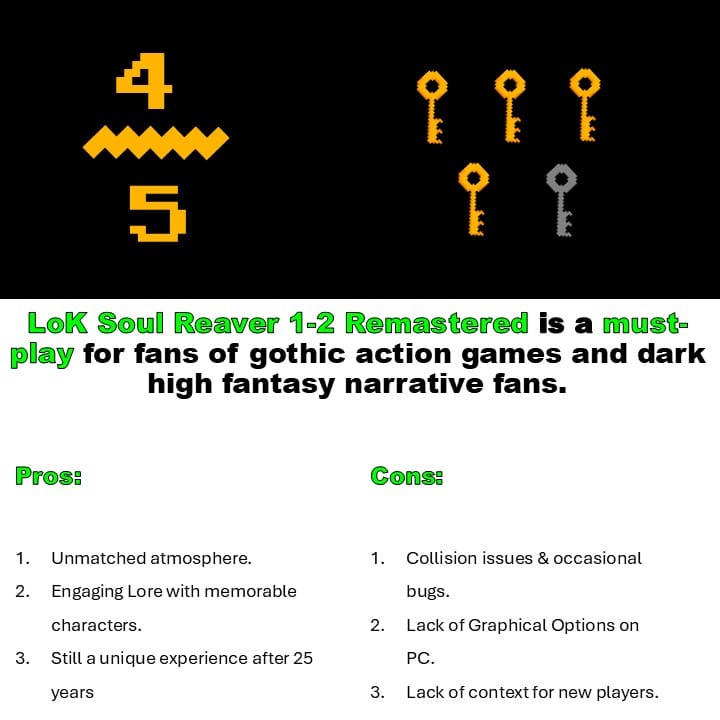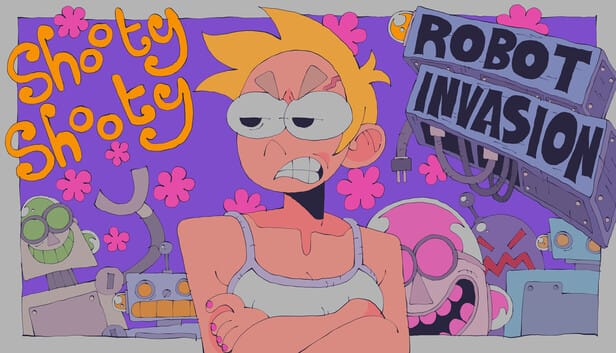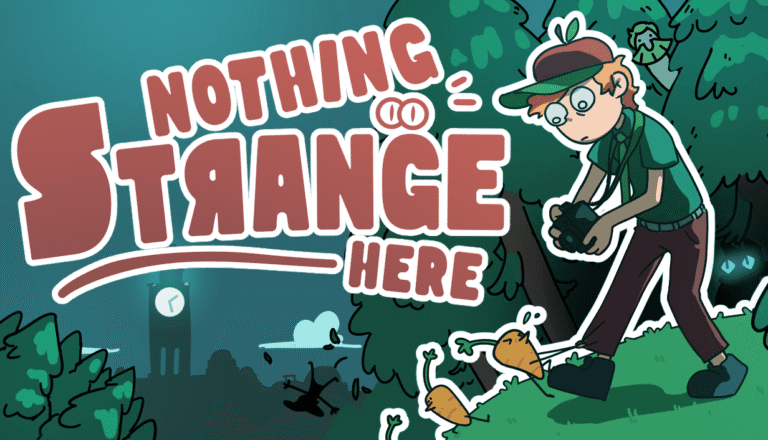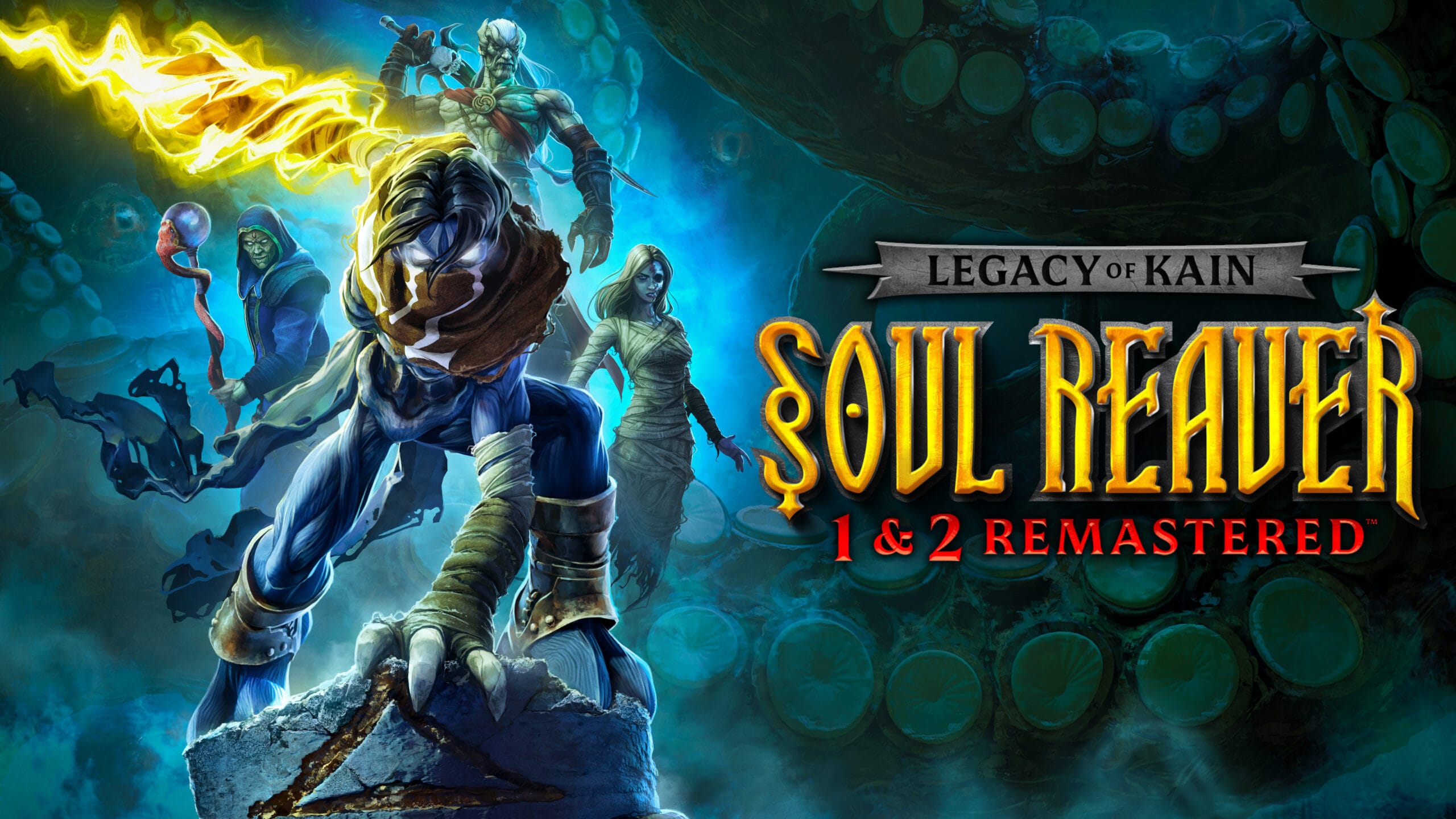
Few series encapsulate the grandeur and depth of gaming’s narrative potential like the Legacy of Kain. Originally released in 1999 and 2001 respectively, Soul Reaver and its sequel are part of a larger saga that blends gothic themes, philosophical musings, and revolutionary mechanics. Now, 25 years after its initial debut, Legacy of Kain: Soul Reaver 1 & 2 Remastered Collection has arrived, promising to breathe new life into these classics. But how well does this remaster fare in a modern landscape where expectations for gameplay quality and technical polish have evolved?
The Legacy of Nosgoth
To understand the significance of this remaster, one must first appreciate the original games’ context. Developed by Crystal Dynamics and directed by Amy Hennig, Soul Reaver set a benchmark for narrative-driven action-adventure games. Its protagonist, Raziel, embarks on a harrowing quest for vengeance against his creator, Kain, after being betrayed and cast into the abyss. The series explored profound themes of free will, predestination, and cyclical violence, enriched by stellar voice acting and a Shakespearean script. The games also innovated technically, introducing seamless world streaming and the dual-realm mechanic, where players could shift between material and spectral realms to solve environmental puzzles.
In bringing these classics to a modern audience, Aspyr has delivered a remaster that balances reverence for the original with selective modernization. But this is not without its challenges.
New Features and Enhancements
The remaster’s most significant improvements lie in its visual overhaul. Both games feature higher resolution textures, updated character models, and dynamic lighting that revitalize Nosgoth’s decaying gothic landscapes. The first Soul Reaver particularly benefits from these enhancements, with details in Raziel’s tattered wings and the ominous architecture of locales like the Silenced Cathedral now fully realized. Aspyr also addressed one of the original’s biggest limitations: camera control. Players can now manipulate the camera freely, a feature that makes exploration feel smoother and more intuitive.
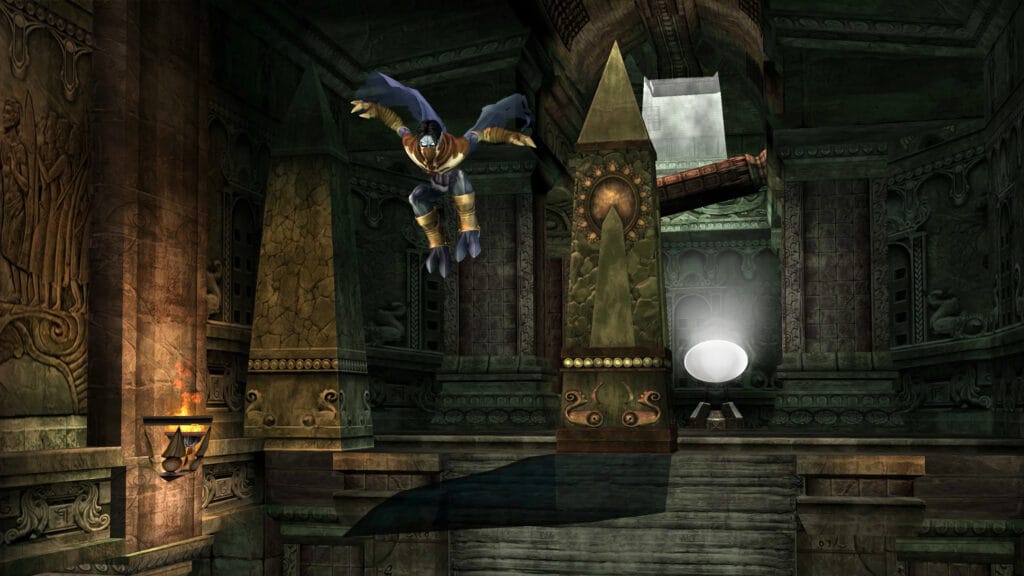
Other quality-of-life upgrades include the addition of a map and compass, subtle tweaks to combat mechanics, and restored cut content. The remaster incorporates previously unfinished levels, such as Turel’s territory, and a “Lost Levels” section that provides a fascinating glimpse into what could have been.
However, some elements remain unchanged, and not always for the better. The reliance on block-pushing puzzles, a staple of late-90s game design, persists in the first game and quickly becomes repetitive. Additionally, while the inclusion of a world map is welcome, its utility is minimal, providing only basic navigation without truly modernizing the experience.
Visual and Audio Improvements
Graphically, the remaster is a mixed bag. The visual upgrades are impressive in many areas, particularly in character models and environmental textures. The ability to toggle between the original graphics and the remastered version highlights the significant progress made in preserving the series’ dark aesthetic. Despite early concerns that brighter environments would compromise the gothic atmosphere, Aspyr’s work ultimately maintains the games’ eerie mood.
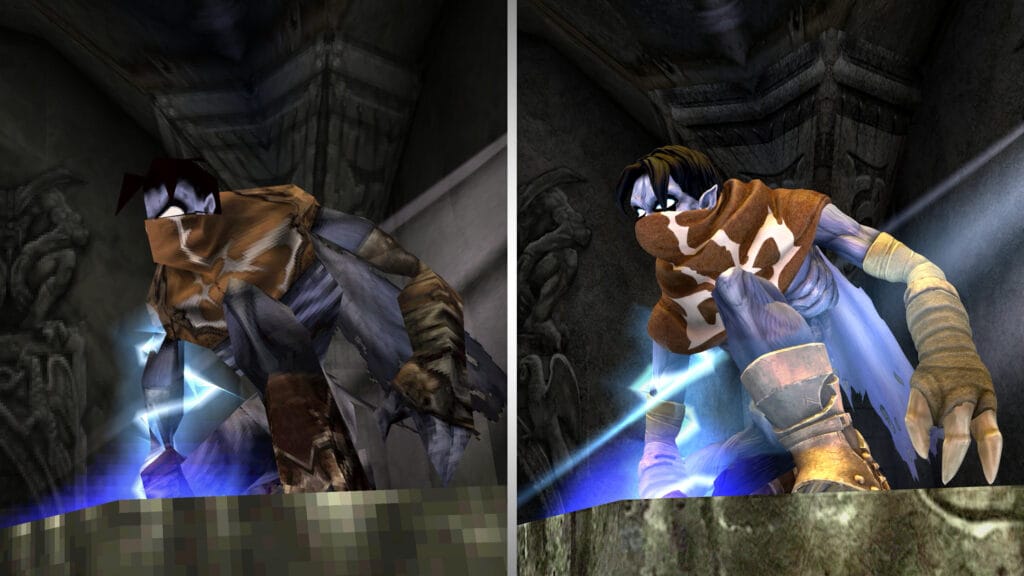
However, certain visual elements still feel dated. Water and fire effects, for instance, appear untouched and clash with the otherwise polished presentation. Additionally, occasional graphical glitches, such as texture pop-ins and seams in the environment, break immersion.
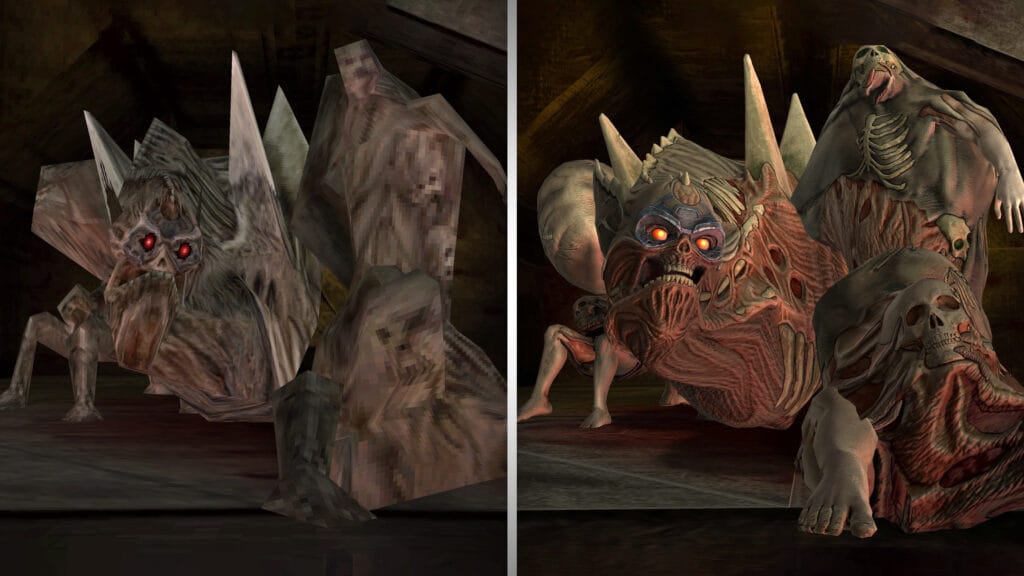
On the audio front, the remastered soundtrack shines. Kurt Harland’s haunting compositions have been cleaned up, offering a richer listening experience. The voice acting, led by talents like Michael Bell and Simon Templeman, remains a highlight, and the remaster’s enhancements to audio clarity allow their performances to resonate more powerfully than ever.
Gameplay: The Good, the Bad, and the Stagnant
Gameplay in the Soul Reaver series has always been a blend of exploration, puzzle-solving, and combat, with varying degrees of success. The remaster retains the core mechanics of the originals, which is both a strength and a limitation.
Combat, while innovative for its time—requiring players to exploit environmental hazards to defeat vampires—feels clunky by today’s standards. Enemy encounters can feel repetitive after a while, and collision detection issues occur occasionally, leading to moments of frustration. While tweaks such as smoother animations and a more responsive control scheme improve the experience, they cannot fully mask the dated mechanics.
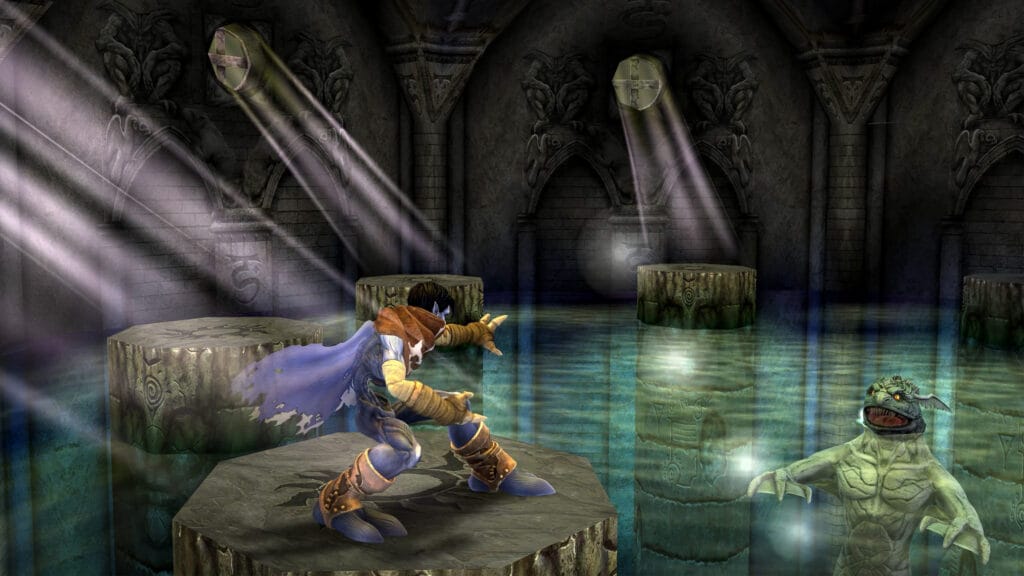
Puzzles fare better. The dual-realm mechanic remains a unique and engaging feature, adding depth to exploration and problem-solving. The remaster’s inclusion of previously cut content, like new elemental puzzles, enriches the gameplay variety, particularly in Soul Reaver 2. However, the reliance on block-pushing mechanics in the first game highlights the series’ age and might alienate newcomers.
One notable improvement is the save system. While the original Soul Reaver forced players to restart from the game’s beginning upon reloading, the remaster allows for checkpoint-based saves, reducing unnecessary backtracking.
Unlocking Hidden Treasures: The Bonus Content of Soul Reaver
Beyond the core gameplay, the remaster excels in its archival efforts. Aspyr has treated fans to a treasure trove of bonus content, including concept art, a music player, and fully remastered versions of the original’s pre-rendered cutscenes. The “Lost Levels” section, showcasing unfinished areas and unused assets, is particularly noteworthy. This interactive museum of cut content provides insight into the ambitious vision behind the series and the constraints that shaped its final form.
The inclusion of a lore map and script archives further demonstrates a commitment to preserving the series’ legacy. For longtime fans, these extras are invaluable, offering a deeper appreciation of Nosgoth’s intricate worldbuilding.
Where the Remaster Stumbles: Challenges and Drawbacks
Despite its many merits, the remaster is not without flaws. Technical issues, such as framerate dips and occasional bugs, detract from the overall experience. While these are often minor, they serve as reminders of the series’ age and the limitations of remastering older titles.
Another missed opportunity lies in the lack of extensive modernization. While visual and control improvements are welcome, the remaster stops short of addressing some of the originals’ deeper flaws. The first game’s inconsistent pacing and the second’s lack of boss battles, for instance, remain unaltered. For newcomers, these issues may hinder immersion, while returning players might find their nostalgia tempered by the dated design.
A Nostalgic Revival with Room for Growth
As a long-time fan of the Legacy of Kain series, revisiting these classics through the remaster has been a bittersweet experience. On one hand, the collection successfully rekindles the magic of Nosgoth, showcasing the series’ unparalleled narrative depth and artistic vision. The improved visuals, enhanced audio, and bonus content make it a worthy tribute to the originals.
On the other hand, the remaster’s adherence to the past occasionally works against it. By preserving certain dated mechanics and design choices, Aspyr risks alienating modern audiences who might struggle to appreciate the games’ historical context. The remaster stops short of being a definitive revival, instead serving as a gateway for fans to revisit the series or introduce it to a new generation.
Final Thoughts
The Legacy of Kain: Soul Reaver 1 & 2 Remastered Collection is a labor of love that successfully preserves two iconic games while offering a glimpse into their unrealized potential. While not without its flaws, the remaster stands as a testament to the series’ enduring legacy and its impact on gaming history. For fans and newcomers alike, it’s an opportunity to step into Nosgoth’s haunting world and experience a story that continues to resonate, even decades later.
In the end, this remaster serves as both a celebration and a reminder. It celebrates the brilliance of the original games, their narrative ambition, and their technical innovation. I’m eagerly wish that the entire franchise receives this amazing treatment.
[This review is based on a press build of the game provided by the publisher. The Game has been reviewed on PC Platform]
